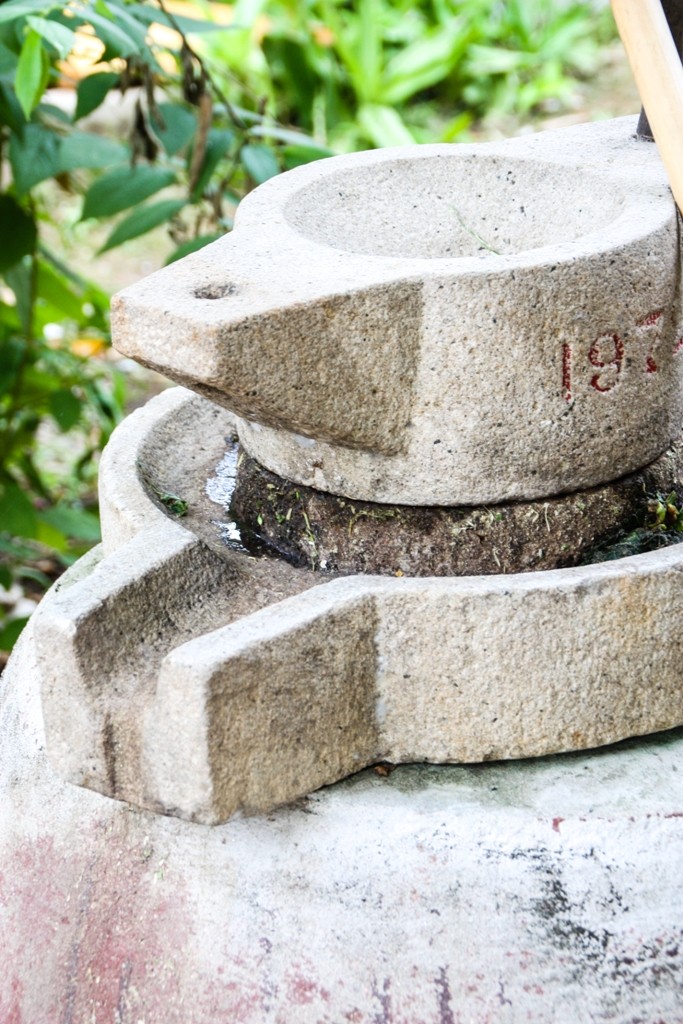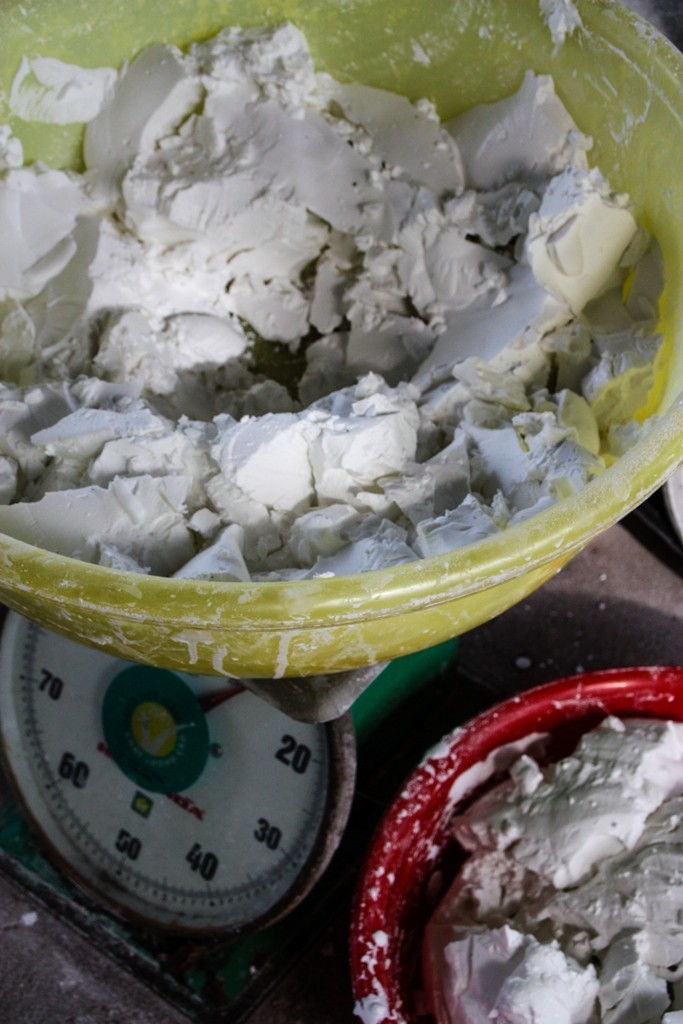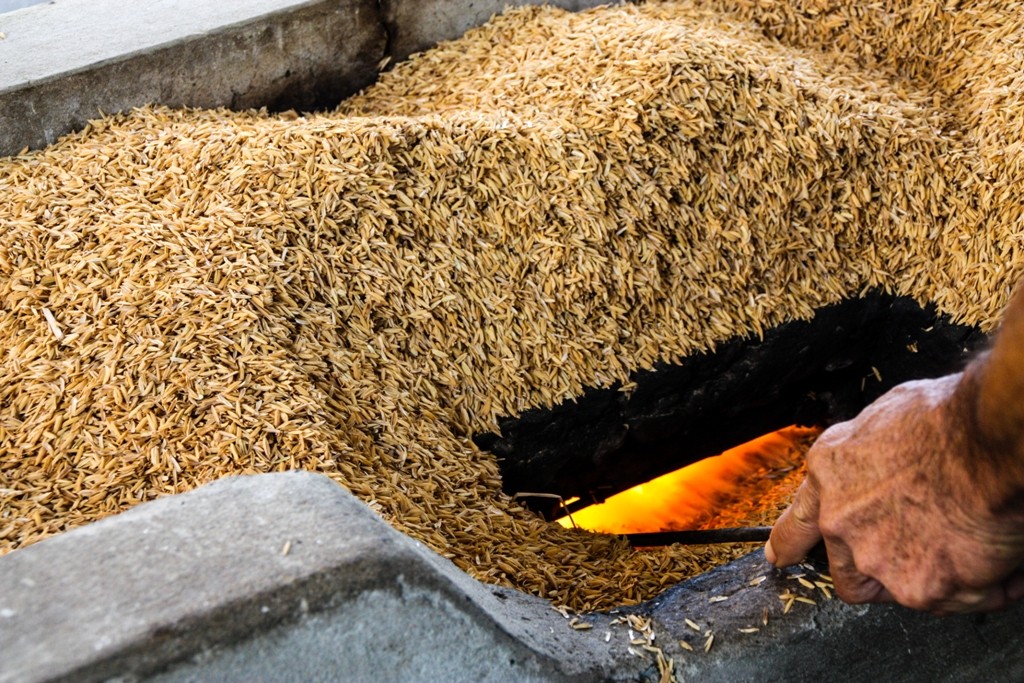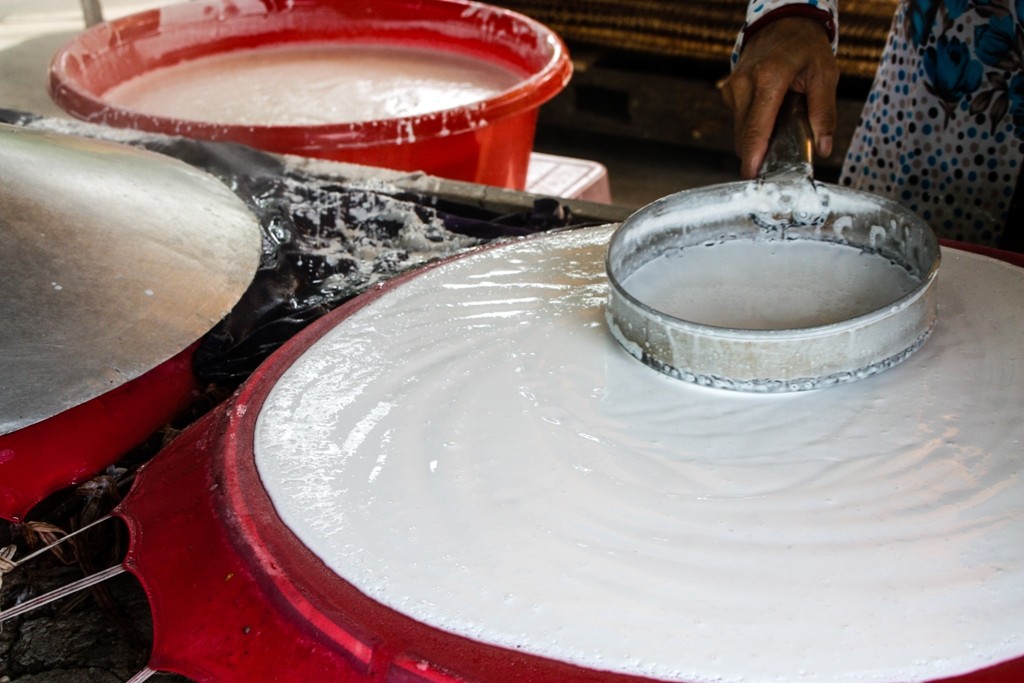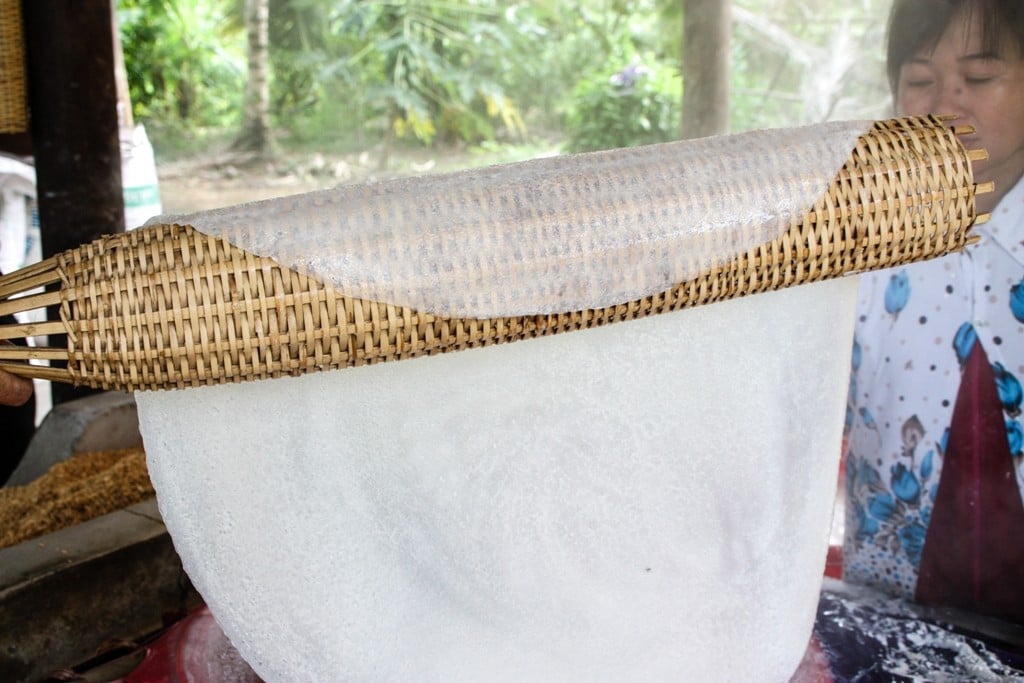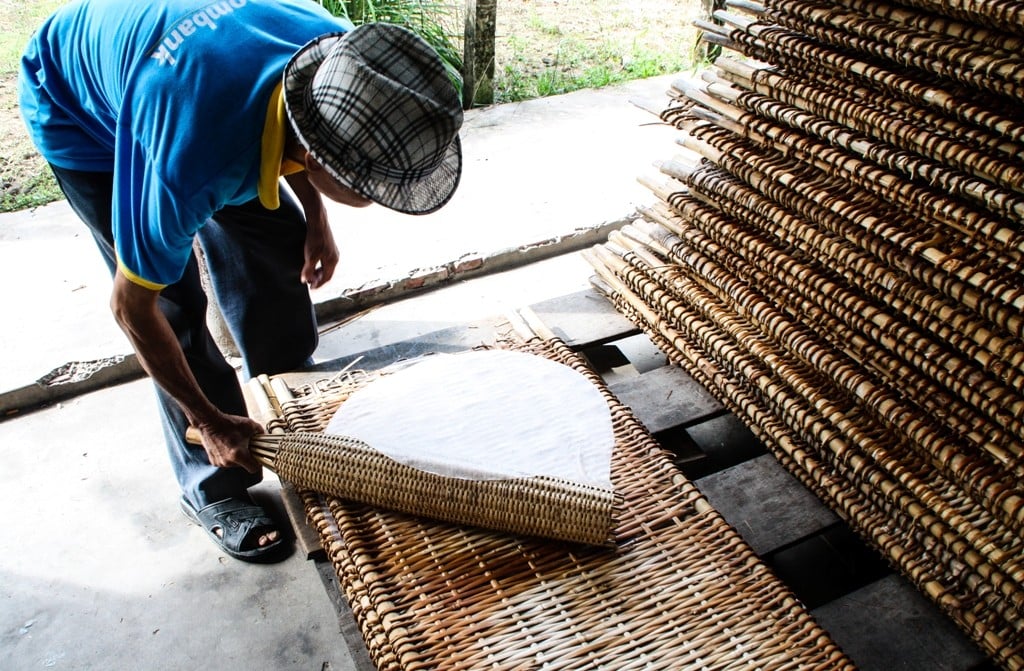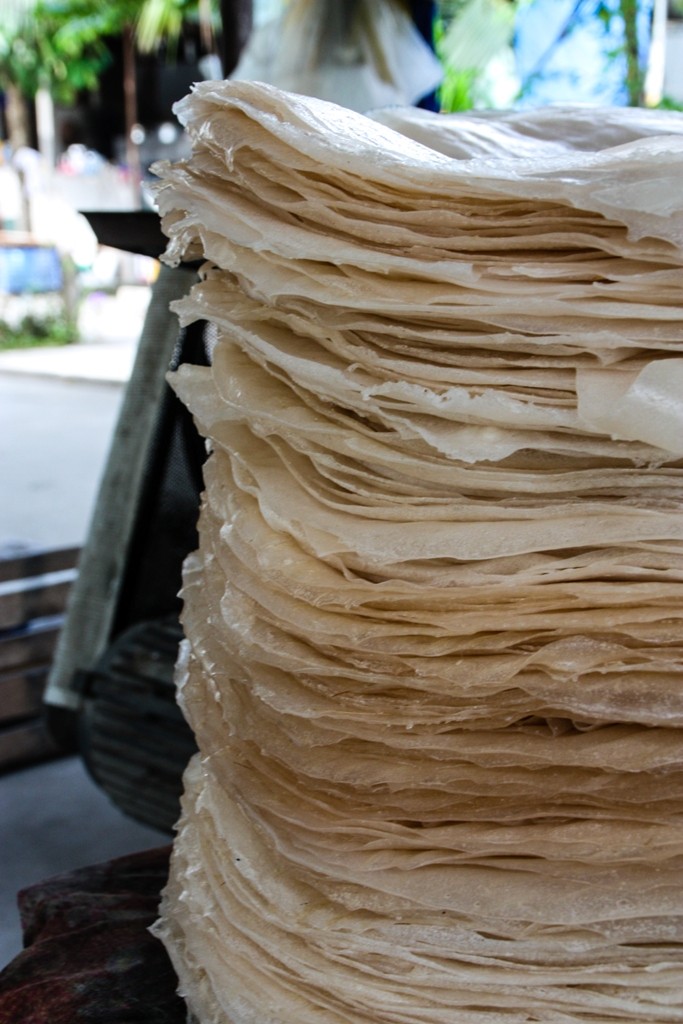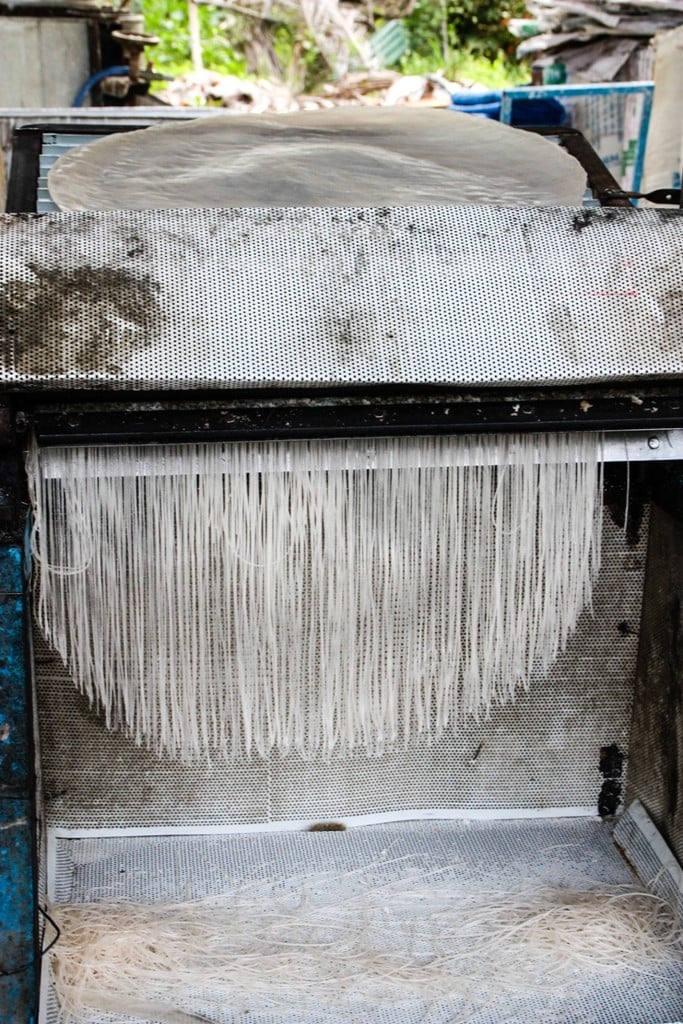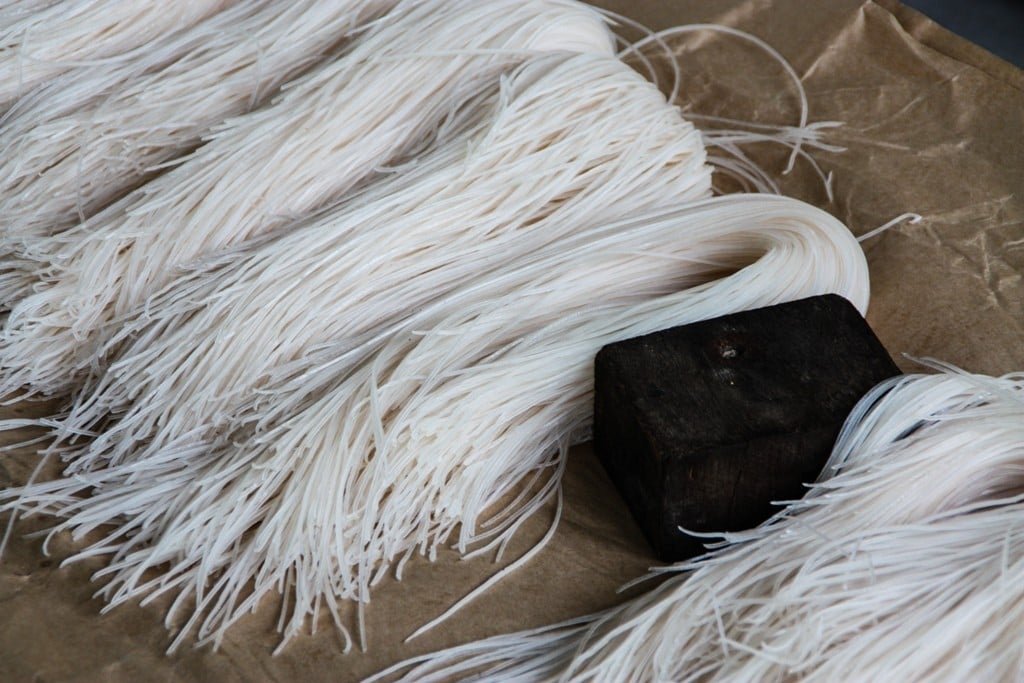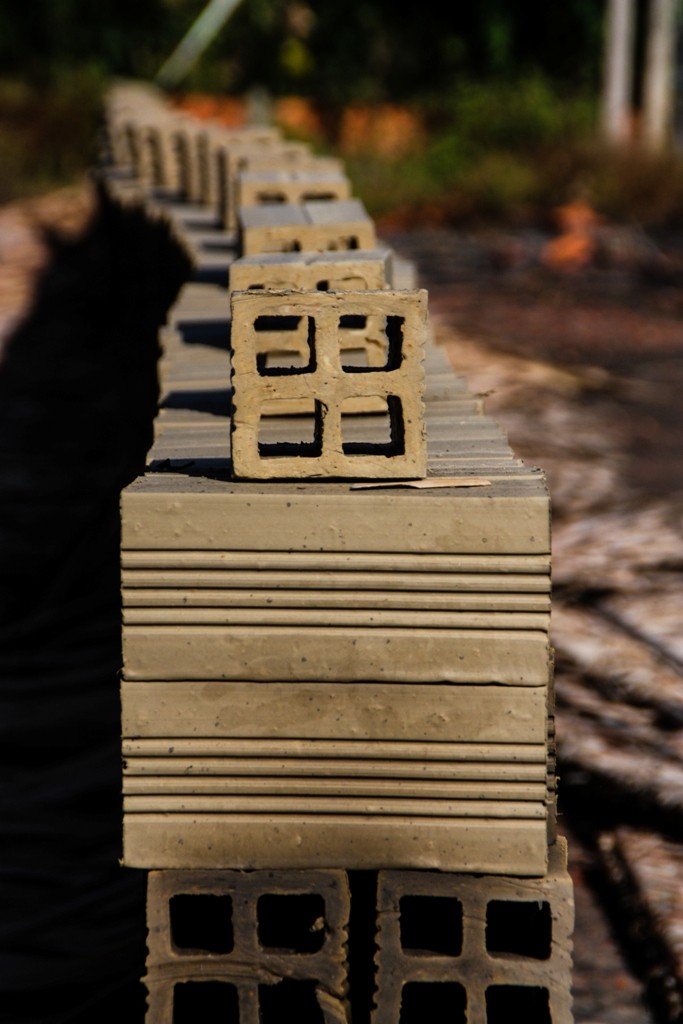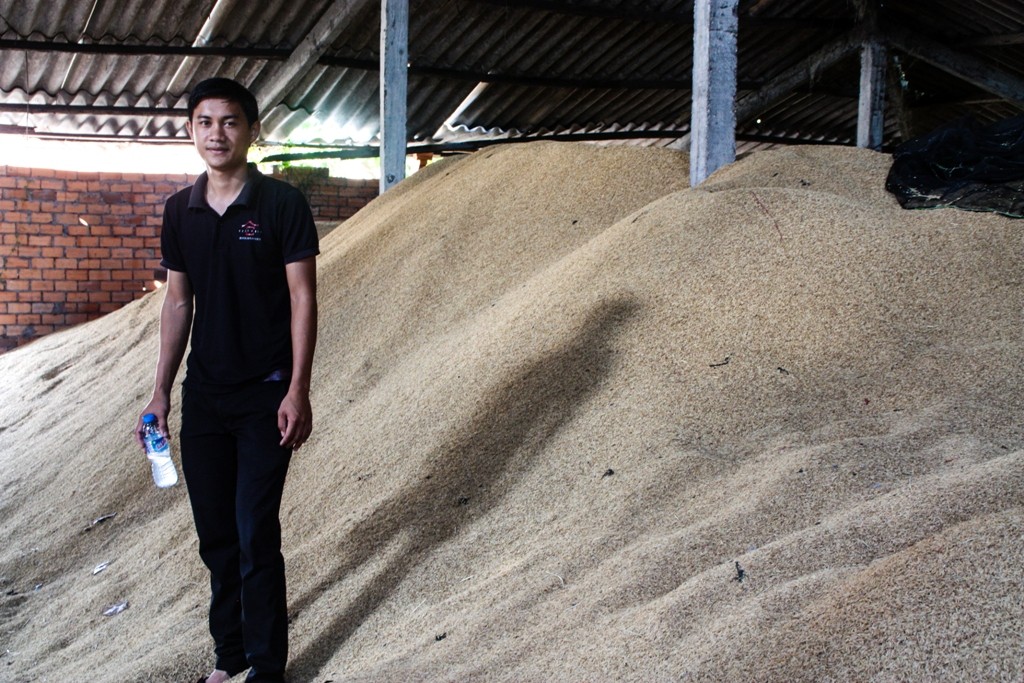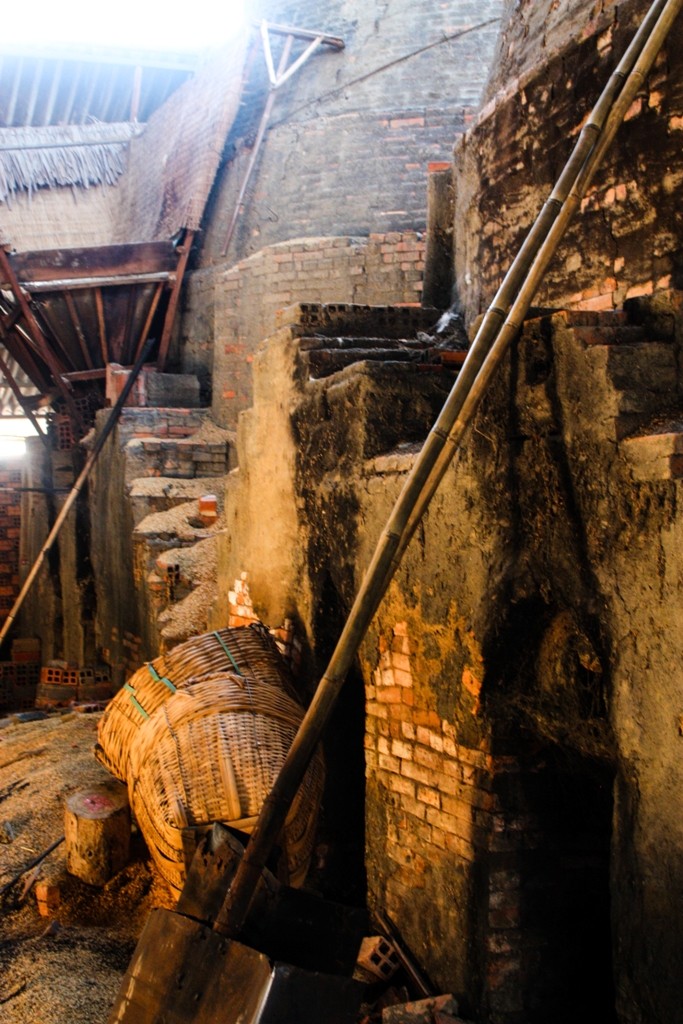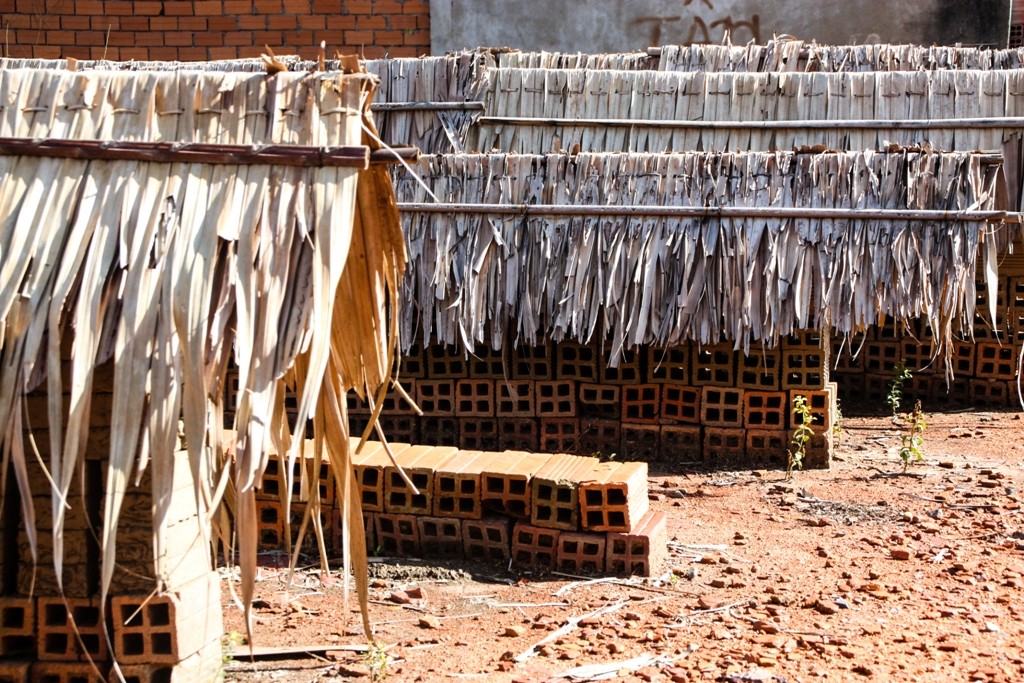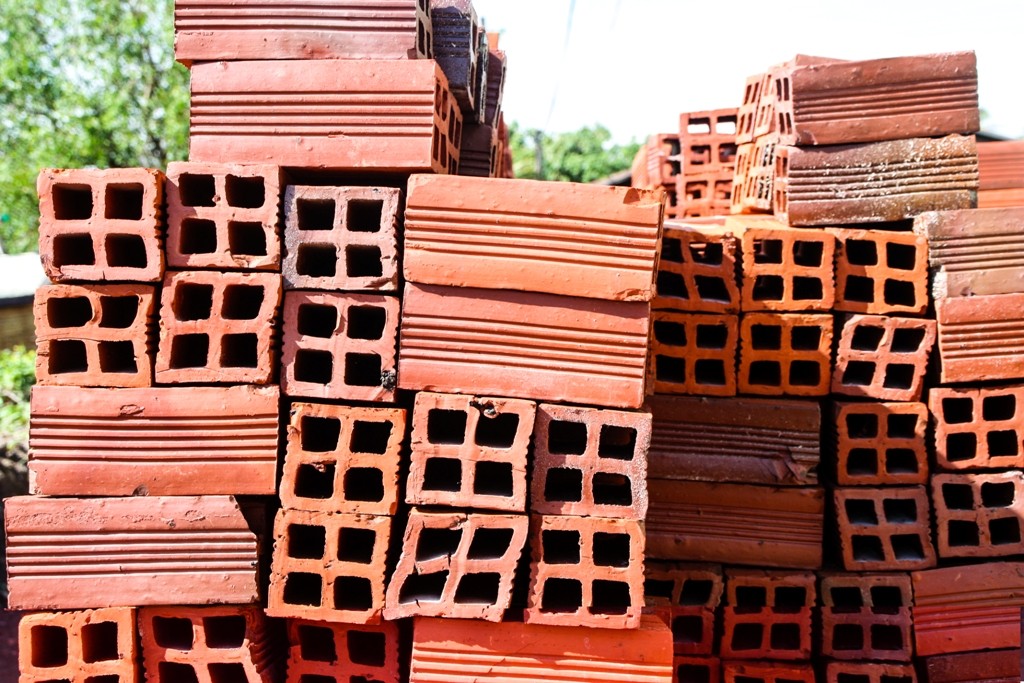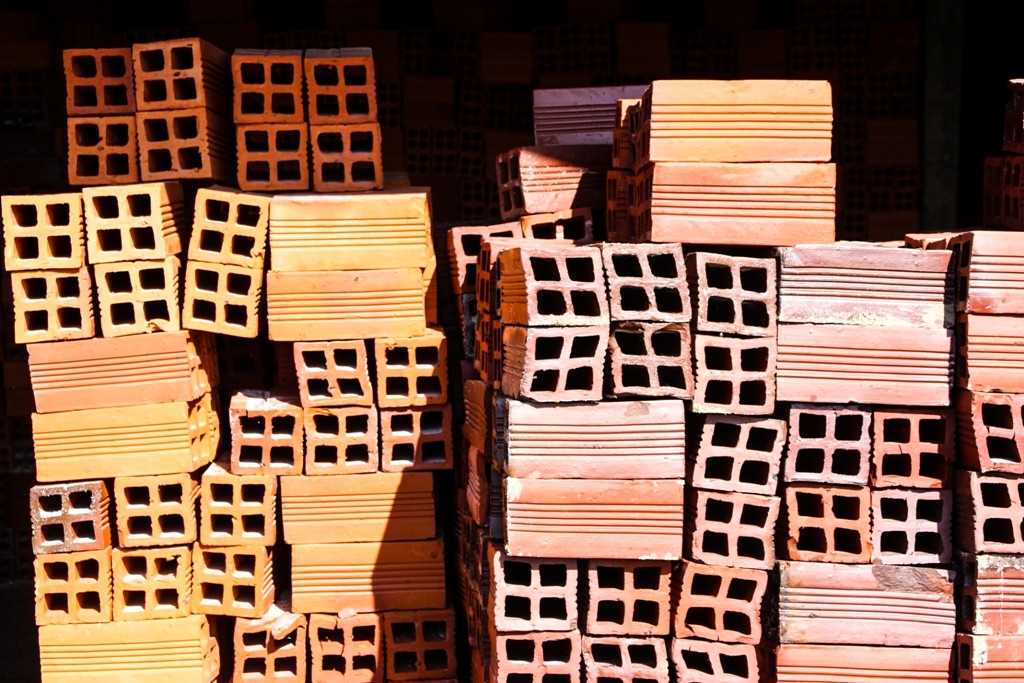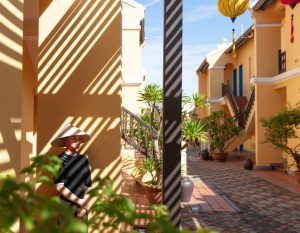One of the joys of the Mekong Delta is visiting small cottage industries that dot the region. Known as “The Rice Bowl” of Vietnam, people of the delta inevitably find themselves with a lot of time on their hands between the harvest seasons.
While the rice fields need minimal tending between planting and harvesting, people still need to stay close to home. The intricate network of waterways also means easy transportation routes to deliver goods — everything from handicrafts to candies to food to bricks is made in the delta.
Today, we’re visiting a rice noodle factory, making use of the abundance of rice grown in the region.
To make the noodles, the first step is to soak the grains of rice in water.
In the past, stone hand grinders were used (and still are in some places).
The rice flour is sometimes mixed with tapioca starch to make chewier noodles.
Water is added to make a loose batter which is steamed into thin sheets. Nothing is wasted, as rice husks provide the fuel for the fire.
A thick cloth is pulled tightly over a pot of boiling water, much like an embroidery hoop, and a paint roller serves as a handy way to oil the cloth.
The batter is then spread evenly over the surface of the cloth and then covered to steam.
The villagers have an ingenious way to remove the delicate “pancakes”. Woven bamboo “bats” provide just the right texture to grip the sticky sheets.
They’re then laid out on bamboo racks to dry in the sun.
If you’ve ever seen rice paper before, now you know where that light woven pattern on them comes from!
Once the sheets are almost dry, they’re machine-cut into noodles.
And arranged in bunches ready for packaging.
Another interesting cottage industry is brick making, utilizing the river clay.
Again, mountains of chaff are used to power the kilns…
… where the bricks are baked.
They’re allowed to settle, shaded from direct sun to prevent cracking…
… reaching the reddish color that we’re used to.
Imperfections show that these are made by hand, like so many other household items in Asia that have long been mechanized in other countries.
How incredible to witness certain crafts being made very much like they have been for hundreds of years in the Mekong Delta, where life is simple and good.
